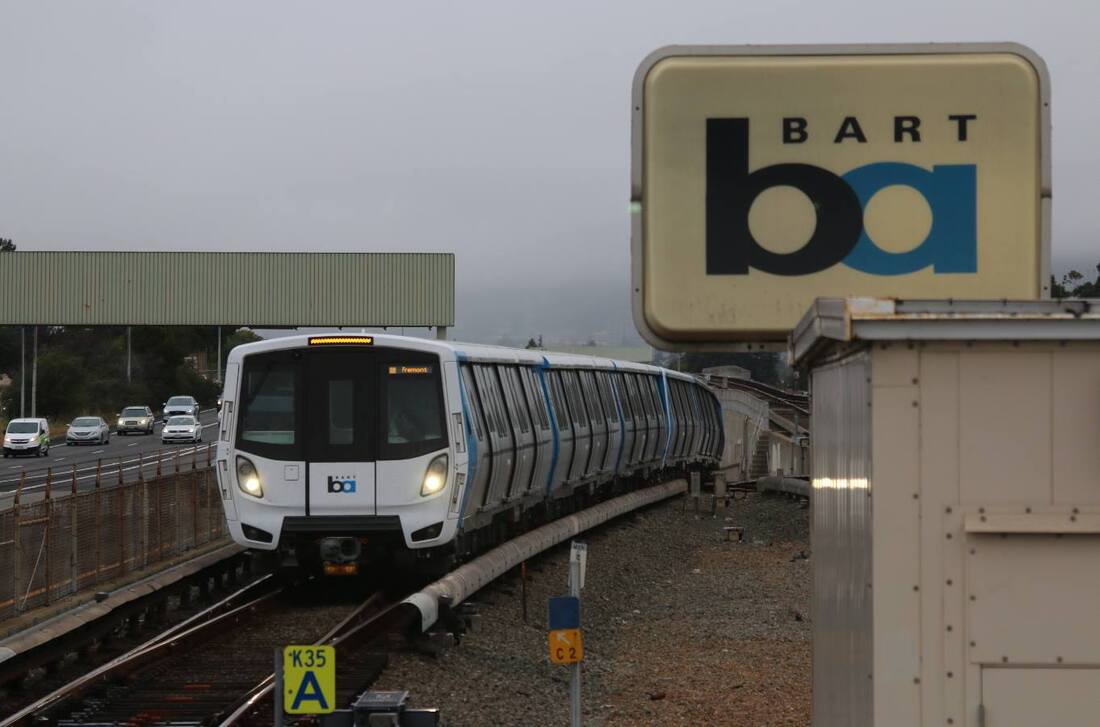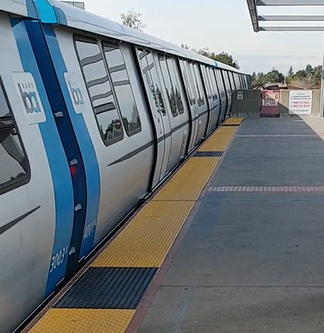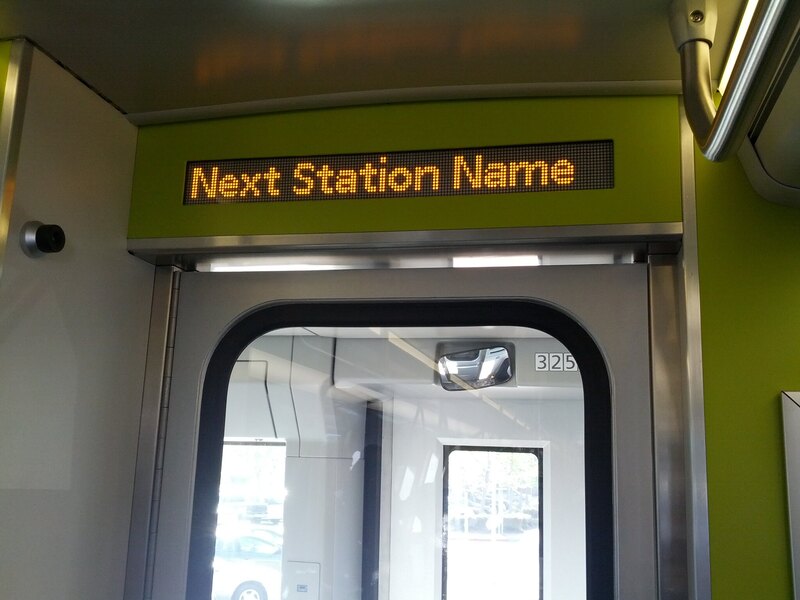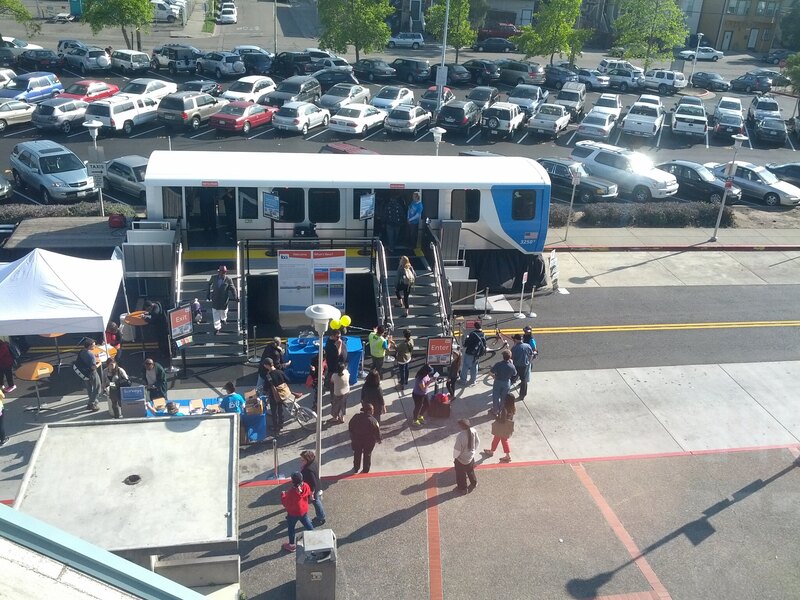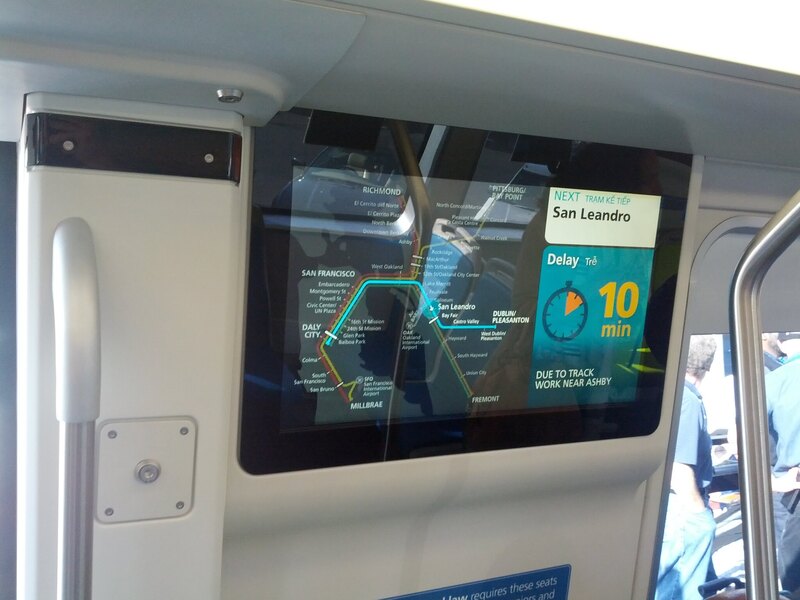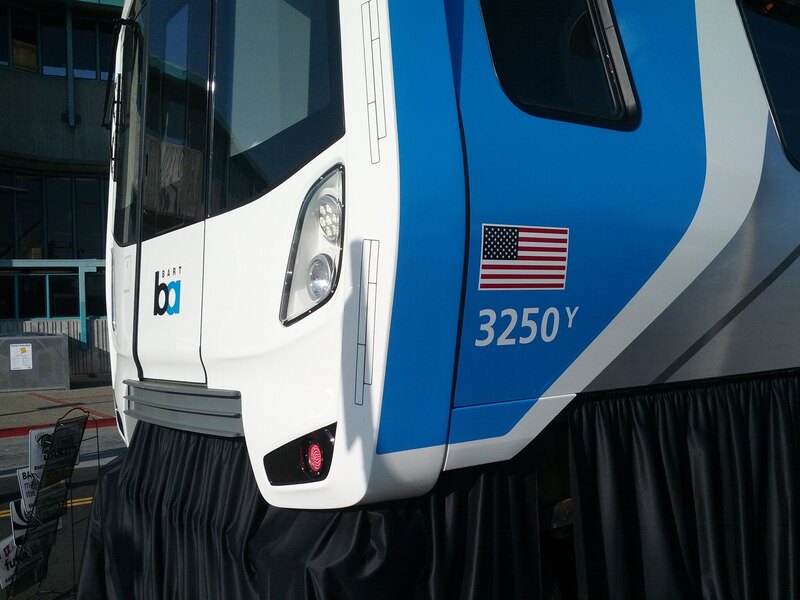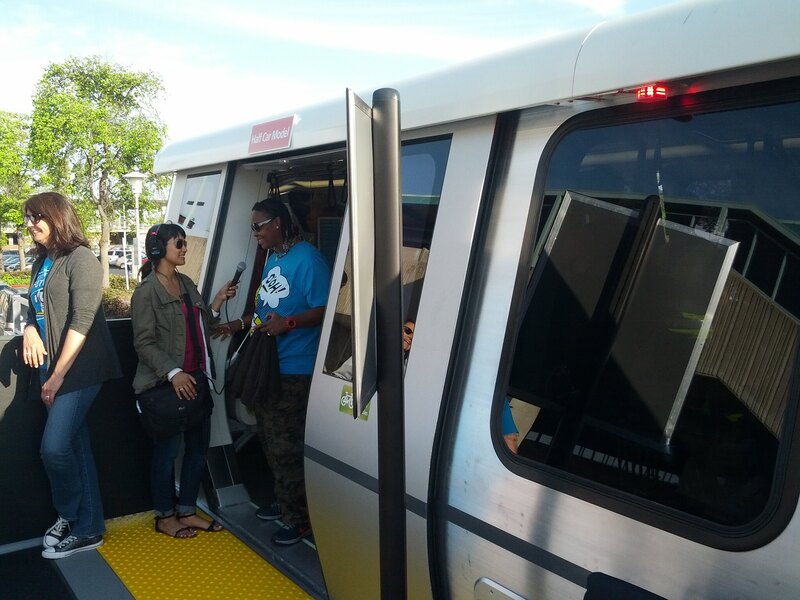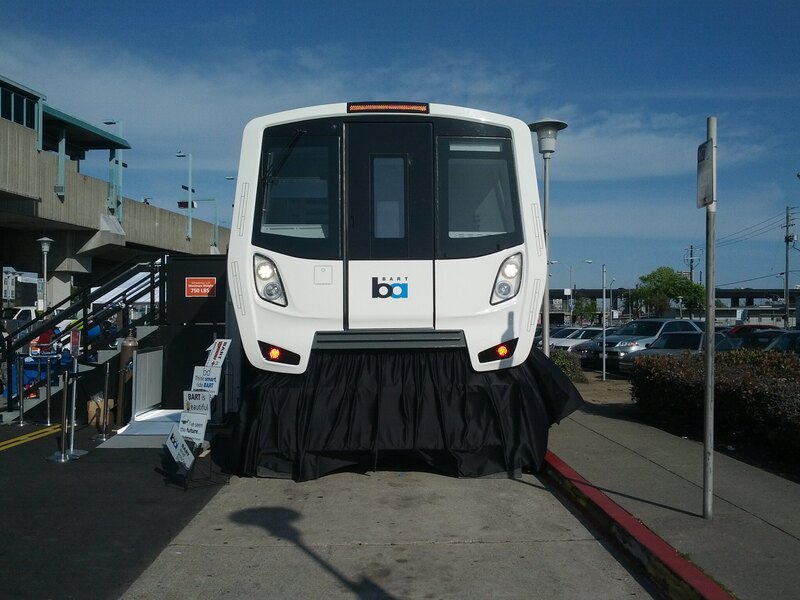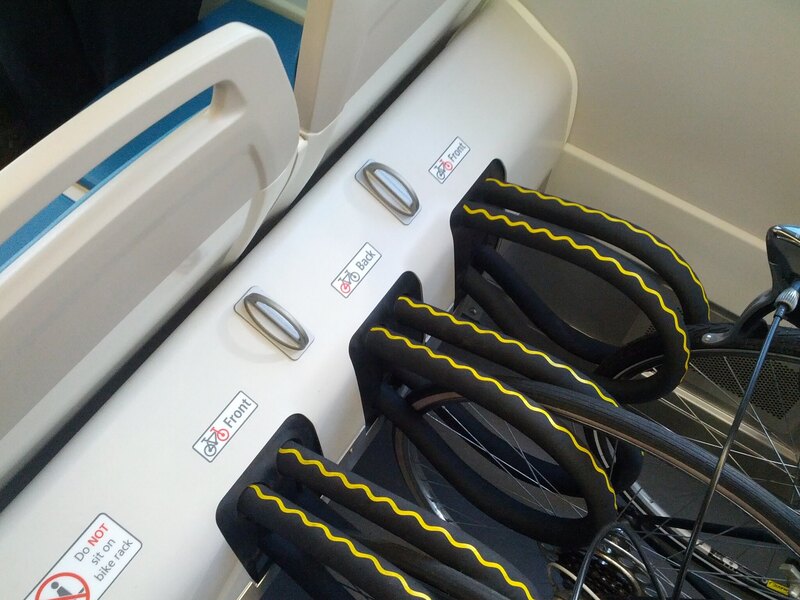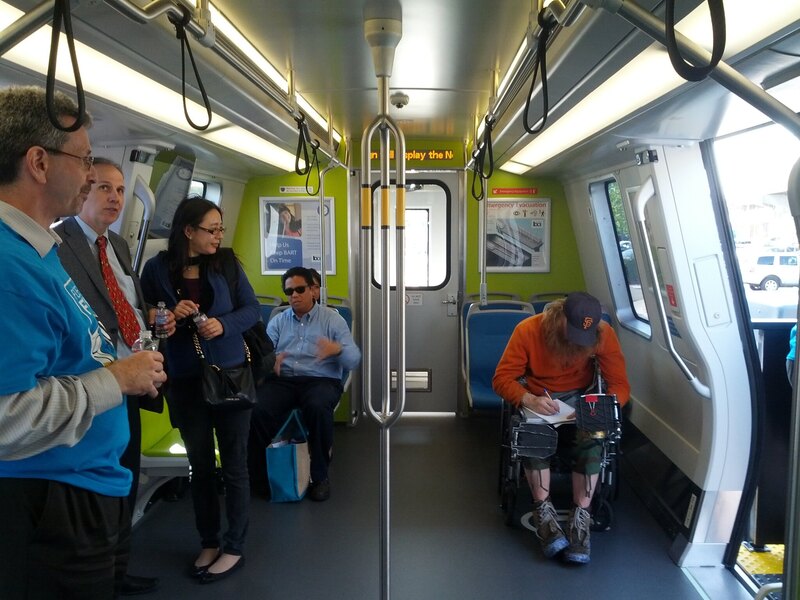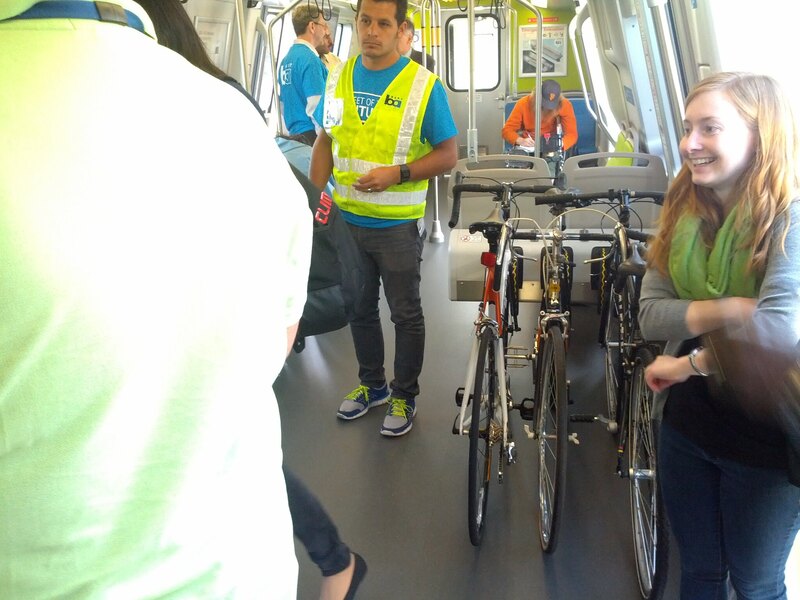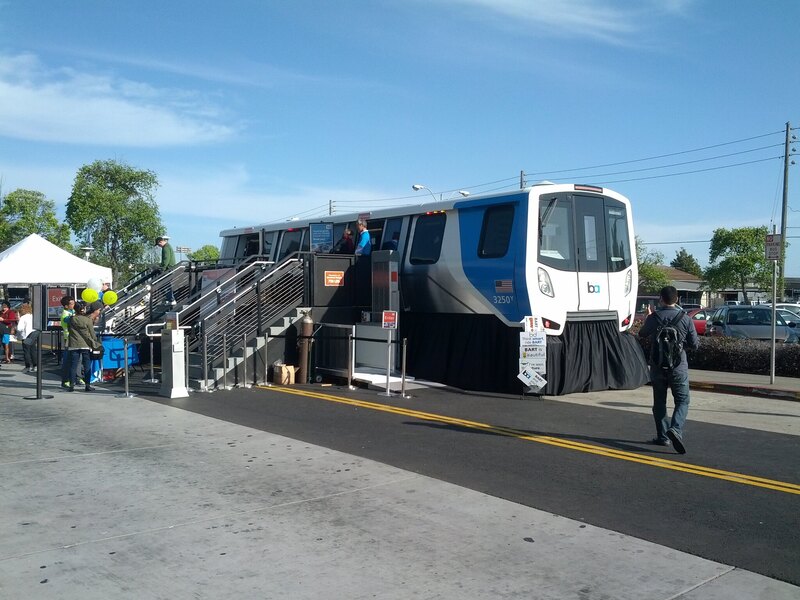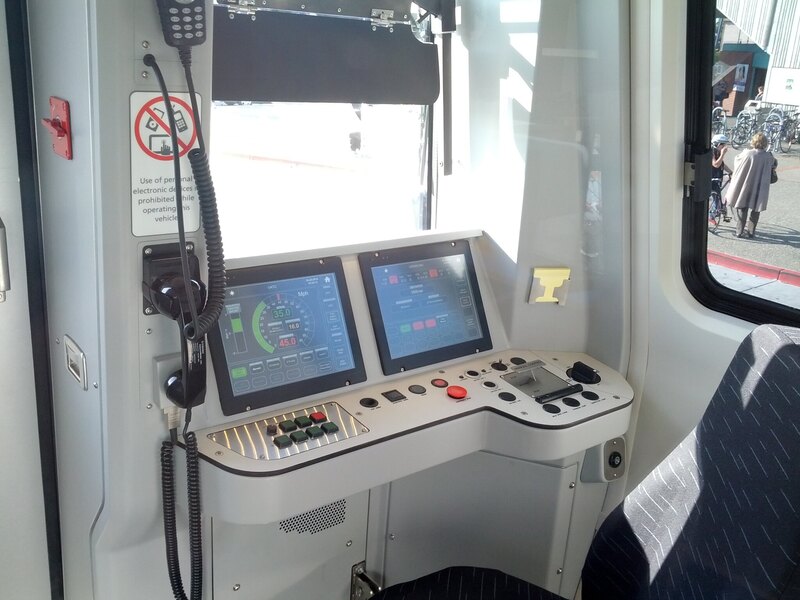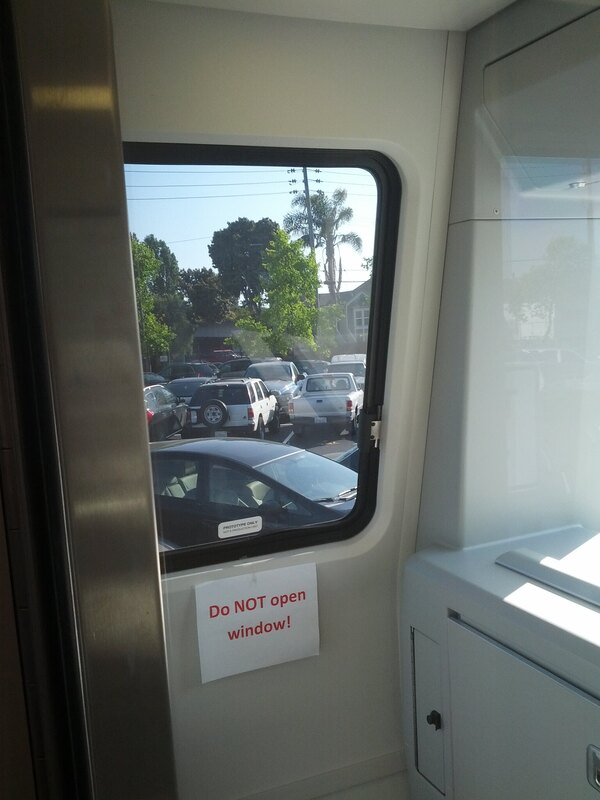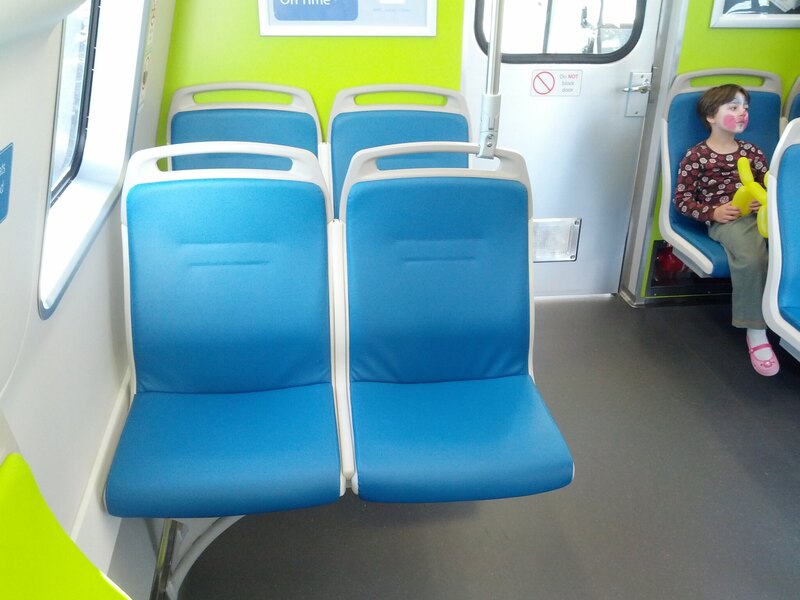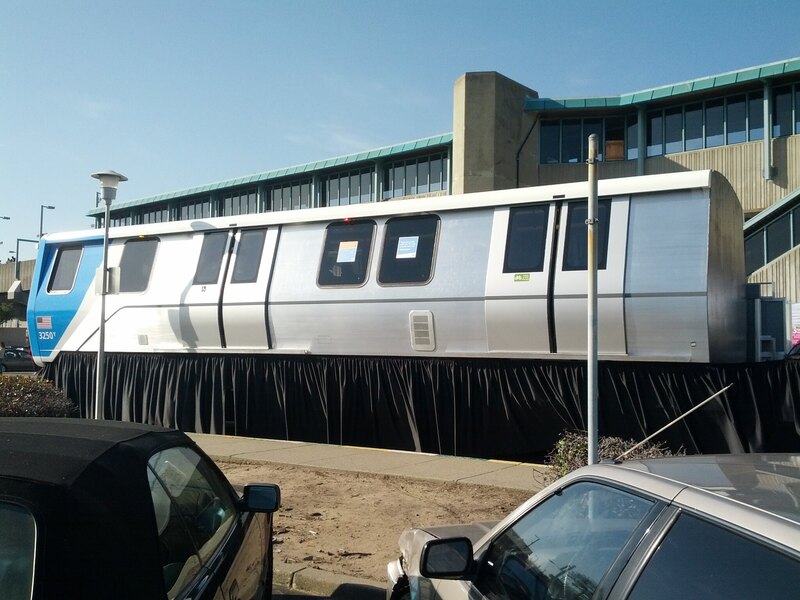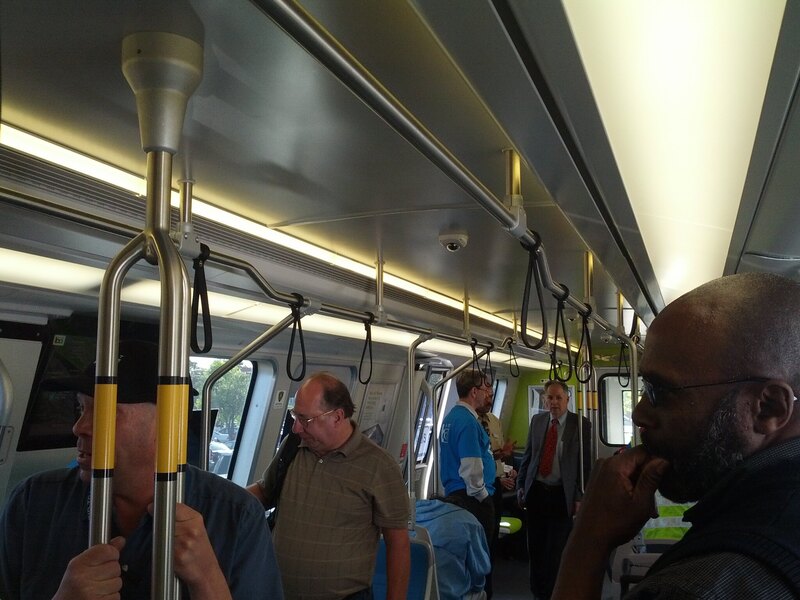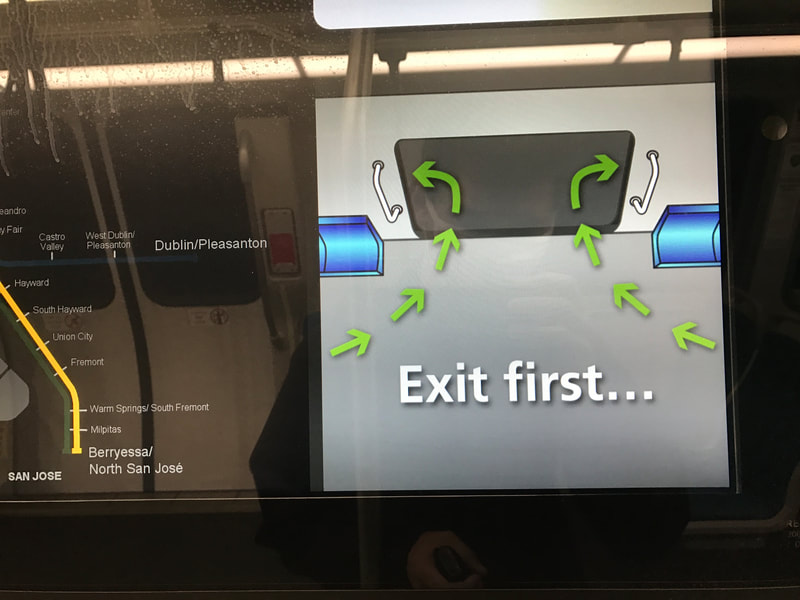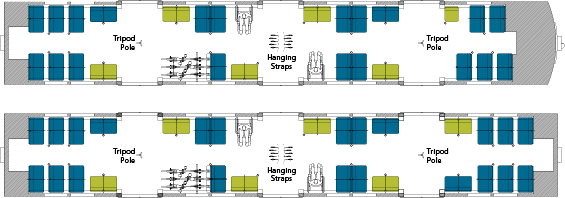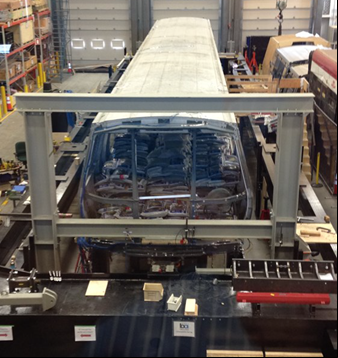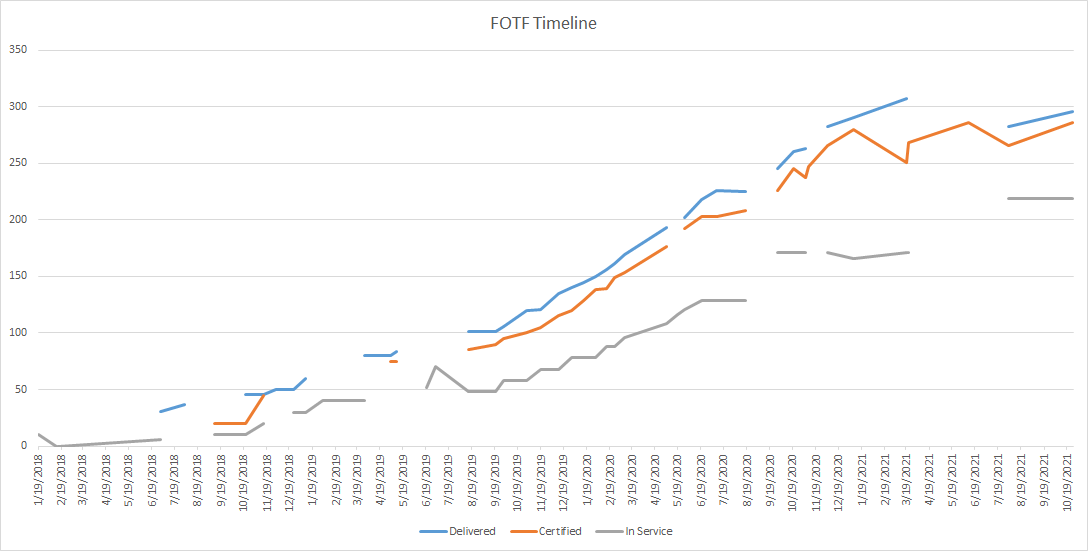Fleet of the Future
The Fleet of the Future (FOTF) is a major car replacement project for BART. The biggest railcar contract in BART history, 775 new cars were designed to replace 669 Legacy Fleet cars and support system expansions and service increases. Two following orders, one for 306 cars was ordered to support Transbay Tube Capacity increases under CBTC and 48 cars were ordered for BART to Santa Clara.
The Fleet of the Future consists of 2 major types of cars: D cars and E cars.
The Fleet of the Future consists of 2 major types of cars: D cars and E cars.
Design and Features of the new BART cars
Mockup
Photos below credit of Erica Fisher/Flickr:
Order
Contract No. 40FA-110
Date: May 10, 2012
This consisted of a base contract and four (4) options, totaling 775 cars as follows:
Base Contract: 260 Vehicles
Option 1: 150 additional Vehicles
Option 2: 150 additional Vehicles
Option 3: 115 additional Vehicles
Option 4: 100 additional Vehicles
Cost:
$2,250,048 each for first 104 D cars (Cars 3001-3104) - These cars onboarded 2018 - c.2020
$1,898,212 each for first 156 E cars (Cars 4001 - 4156) - These cars onboarded 2018 - c.2020
$1,775,601 each for next 206 D cars (Cars 3105 - 3310) - These cars onboarded c.2020 - 2024
$1,574,956 each for next 309 E cars (Cars 4157 - 4465) - These cars onboarded c.2020 - 2024
The ratio is 4 D cars to 6 E cars. This was due to a planned "rapid make" of trains during the design phase. Now, BART will likely have too few E cars, similar to the 1970s problem of having too few B cars.
There may be an expansion/option for a total fleet of 1081-1200 cars in the future.
Date: May 10, 2012
This consisted of a base contract and four (4) options, totaling 775 cars as follows:
Base Contract: 260 Vehicles
Option 1: 150 additional Vehicles
Option 2: 150 additional Vehicles
Option 3: 115 additional Vehicles
Option 4: 100 additional Vehicles
Cost:
$2,250,048 each for first 104 D cars (Cars 3001-3104) - These cars onboarded 2018 - c.2020
$1,898,212 each for first 156 E cars (Cars 4001 - 4156) - These cars onboarded 2018 - c.2020
$1,775,601 each for next 206 D cars (Cars 3105 - 3310) - These cars onboarded c.2020 - 2024
$1,574,956 each for next 309 E cars (Cars 4157 - 4465) - These cars onboarded c.2020 - 2024
The ratio is 4 D cars to 6 E cars. This was due to a planned "rapid make" of trains during the design phase. Now, BART will likely have too few E cars, similar to the 1970s problem of having too few B cars.
There may be an expansion/option for a total fleet of 1081-1200 cars in the future.
Construction/Production
BART cars begin their assembly in Mexico, followed by final assembly in the US. Read more about the construction of BART's new cars here: FOTF Production
Features
PIS
|
|
FOTF are the first cars (outside a handful of modded legacy cars several years ago) to provide passenger information system. This is composed of the following:
|
Seats
|
With only 47 seats per D car, and 54 per E car, the Fleet of the Future, in this regard, they are best left to be known as the "Fleet of the Few Chair."
The seats that are in the car are in the layouts pictured to the left. The seating arrangement is dictated by the three side doors. Priority seating, for persons with disabilities, pregnant women, and the elderly are located nearest the doors. Notably, one of these seats is a single seat (due to cab space requirements). The seats provide the seater with a degree of lumbar support, at a slightly higher elevation than the legacy cars. The seats have less cushion compared to the old cars, but are tamper resistant. Each seats has a built-in handrail. There is one D car, 3042, with an awful sideways-only seating layout, added during 2020. |
Technical
From the Bombardier Fact Sheet:
"The carbody of the D and E car series is manufactured mainly from aluminum extruded profiles, welded together as subassemblies and attached together with huck bolt fasteners. The modular design of the car makes the assembly process easier and it also facilitates maintenance. The structural shell of the carbody includes the floor, the roof, side walls, end wall framing, and supports for trucks. The side wall, central floor, and central roof extrusion profiles provide a stiff structure due to the double skin design. The inner skin machining of the side wall and the central roof is optimized in order to minimize weight without affecting the structural integrity and stiffness of the assembly. Internal extrusion webs reinforce window corners or other stressed areas. The design is also modular for assembly and repair in case of collision damage. Furthermore, the car structure can sustain special loading maneuvers such as re-railing, lifting by the roof, and maintenance loading such as concentrated loads of 300 pounds, applied by personnel working on the roof, at intervals of 30 in. apart. The BART carbody is also equipped with a Crash Energy Management (CEM) system."
"The carbody of the D and E car series is manufactured mainly from aluminum extruded profiles, welded together as subassemblies and attached together with huck bolt fasteners. The modular design of the car makes the assembly process easier and it also facilitates maintenance. The structural shell of the carbody includes the floor, the roof, side walls, end wall framing, and supports for trucks. The side wall, central floor, and central roof extrusion profiles provide a stiff structure due to the double skin design. The inner skin machining of the side wall and the central roof is optimized in order to minimize weight without affecting the structural integrity and stiffness of the assembly. Internal extrusion webs reinforce window corners or other stressed areas. The design is also modular for assembly and repair in case of collision damage. Furthermore, the car structure can sustain special loading maneuvers such as re-railing, lifting by the roof, and maintenance loading such as concentrated loads of 300 pounds, applied by personnel working on the roof, at intervals of 30 in. apart. The BART carbody is also equipped with a Crash Energy Management (CEM) system."
How many new cars are in service?
5/22/22, 6/7/23

